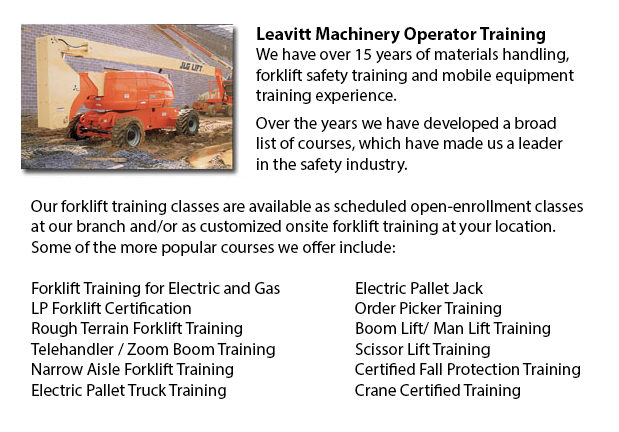
Aerial Lift Certification Vaughan - Aerial Lift Certification is for individuals who need an in-depth understanding of aerial lift safety. Operators and inspectors, supervisors, maintenance workers and construction craftsmen should perform a certificate and training program. Federal, provincial and state regulations need businesses to be certified to be able to carry out in-house aerial lift inspections.
Regardless of differences in the type of work being done, all workers who perform tasks at elevated levels generally make use of the same means to access the needed height. Scissor lifts and aerial lifts are the mechanized devices used in order to lift equipment and employees to elevated worksites.
Bucket trucks called Cherry Pickers are aerial platforms which feature a bucket and supported boom. The primary danger to using this particular type of platform is usually falls, electrocutions, and tip overs. Certification ensures that workers who utilize aerial lifts are trained properly to safely work the machine. Training also makes certain that workers know how to maintain aerial work platforms based on the manufacturer's directions.
Aerial lift training certification programs will comprise the following: Vehicle-mounted aerial lifts, Boom-supported scissor lifts and aerial lifts. Trainees will learn about safe operating procedures and will gain knowledge about the dangers which often lead to aerial lift accidents. They will become technically competent in the various types of aerial lifts, as well as terminology and parts. From choosing the right aerial lift for the job to interpreting rated capacity charts, the certification program will provide workers with everything they need to know to safely perform their work.
Individuals who are assigned the task of inspecting aerial lift devices must know how to check booms, gears, structural parts, operating mechanisms, control systems and functions, braking systems, power plants, pins and shafts, attachments, hydraulic, pneumatic and electric components, emergency safety devices and operator aids, et cetera. Training will comprise the following: the role of the inspector in reducing accidents and liability exposure; monthly and annual check; how to perform a pre-use; how to write inspection reports; how to apply and interpret rules regarding aerial lift safety standards; inspection procedures, techniques and checklists; complying with record keeping requirements; understanding and applying the three levels of aerial lift inspection; and when to remove defective aerial lifts from service.
-
Forklift License Vaughan
Forklift License Vaughan - Getting a forklift certification or forklift license in North America would require the trainee to do hands-on training in addition to classroom instruction. The provincial, federal and state regulatory bodies are responsib... More -
Forklift Ticket Vaughan
Forklift Ticket Vaughan - Forklifts and the pallet jack is meant for just about the same reason. They work to raise and move supplies and goods from one place to another. This however is where the comparison stops though. With the pallet jack, the be... More -
Manlift Certification Vaughan
Manlift Certification Vaughan - The Manlifts and Elevated Platforms course provides training on the rules, regulations and proper application of safe operating measures and work practices included in everyday activities for those who work making use... More -
Heavy Equipment Training Vaughan
Heavy Equipment Training Vaughan - The two most common kinds of heavy equipment training are categorized into the categories of machines; equipment that is fashioned with rubber tires or those with tracks. The tracked vehicle are heavy duty machines... More -
Boom Lift Ticket Vaughan
Boom Lift Ticket Vaughan - Boom lifts are equipment that has a platform that may be lowered or raised to different heights, thus making this piece of equipment an important necessity in a wide variety of professions. Offered in many different particu... More -
Telehandler License Vaughan
Telehandler License Vaughan - The telescopic handler or telehandler is a frequently used equipment in industrial and agricultural applications. This particular machine is the same in appearance to a forklift and also functions in a similar way, altho... More -
Scissor Lift Training Vaughan
Scissor Lift Training Vaughan - Scissor lifts have to be operated competently to be able to protect the safety of the machinery and the safety of others within the workplace. Operators who are skilled are trained to drive the particular kind of sciss... More -
Forklift Training Course Vaughan
Forklift Training Course Vaughan - CSA and OSHA establish criteria for forklift safety training which meets existing regulations and standards. Anybody planning to operate a forklift is needed to successfully finish safety training before making use... More

Forklift Training Vaughan
TOLL FREE: 1-888-254-6157
Vaughan, Ontario
forklifttrainingvaughan.com
Email Us
About Us


